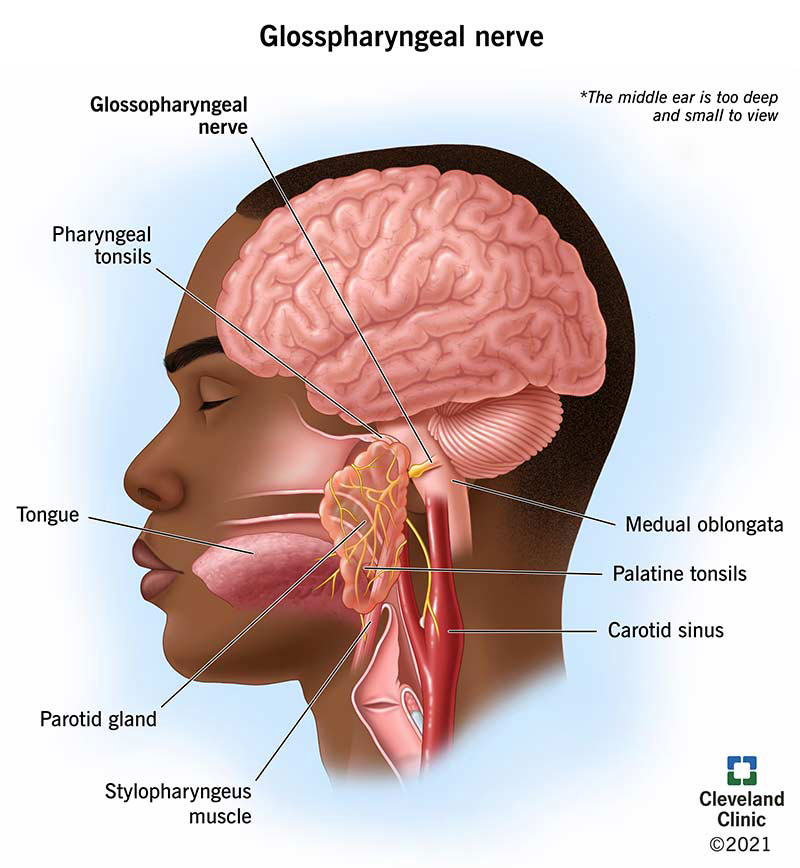The glossopharyngeal nerve is the ninth set of 12 cranial nerves (CN IX). It provides motor, parasympathetic and sensory information to your mouth and throat. Among its many functions, the nerve helps raise part of your throat, enabling swallowing.
Advertisement
Cleveland Clinic is a non-profit academic medical center. Advertising on our site helps support our mission. We do not endorse non-Cleveland Clinic products or services. Policy

Nerves are bundles of thread-like fibers that make up part of your nervous system. Your brain’s chemical and electrical messengers (neurons) travel along these fibers. Nerves help your brain communicate with different parts of your body.
Advertisement
Cleveland Clinic is a non-profit academic medical center. Advertising on our site helps support our mission. We do not endorse non-Cleveland Clinic products or services. Policy
The glossopharyngeal nerve is the ninth of 12 cranial nerves (CN IX). These nerves start in your brainstem. They connect to organs, muscles and other structures in your mouth and throat. These nerves are paired — there’s one on each side.
The glossopharyngeal nerve ends deep inside of your neck near the back of your throat. Among its many functions, it enables swallowing. It’s also one of the few nerves in your body with three types of fibers:
There are many glossopharyngeal nerve functions. The glossopharyngeal nerve affects muscles, organs and body processes near your throat, such as the:
Advertisement
The glossopharyngeal nerve starts in the lower part of your brainstem (medulla oblongata). It passes through many structures in your neck before reaching your pharynx (throat).
Its path includes:
Many conditions can affect CN IX, some of which can impact quality of life. They include:
Other conditions include:
Tumors and cancer affecting your:
Complications from medical procedures such as:
It might not be possible to prevent some causes of CN IX disease. Conditions such as glossopharyngeal neuralgia can occur for no known reason.
If you need a medical procedure to repair an issue near the CN IX, it’s essential to find an experienced surgeon. Doctors who perform a high volume of the type of procedure you need are an ideal choice.
Some conditions, such as cancers affecting your oral cavity and throat, are preventable. Steps you can take to lower your risk include:
Advertisement
Call your healthcare provider if you experience:
The glossopharyngeal nerve (CN IX) supplies organs, muscles and other structures in your mouth and throat. It helps you taste food and sense pain in your throat. CN IX can become damaged due to cancer, complications from medical procedures and more. You can lower your risk by living a healthy lifestyle and seeking surgical care from experienced doctors.
Advertisement
If you have a neurological condition, you want expert advice. At Cleveland Clinic, we’ll work to create a treatment plan that’s right for you.

Last reviewed on 01/11/2022.
Learn more about the Health Library and our editorial process.